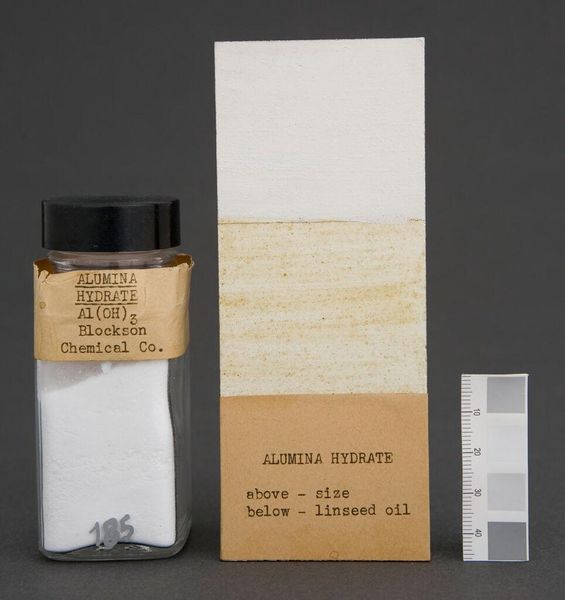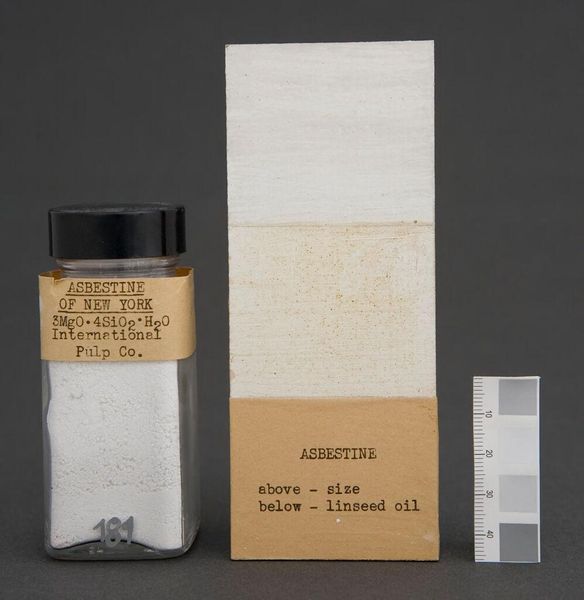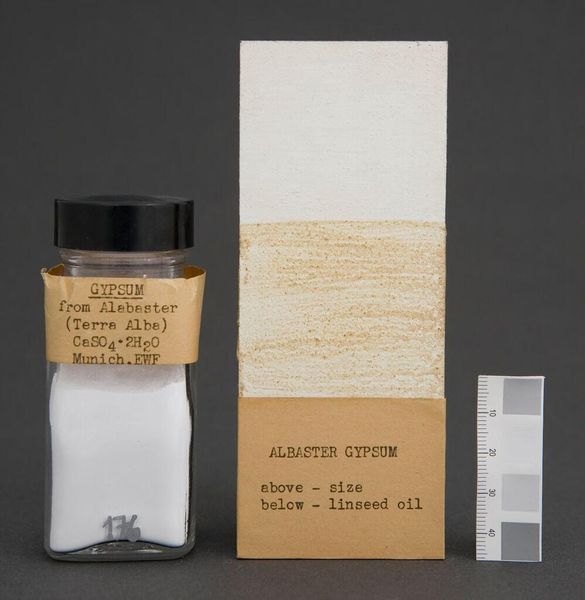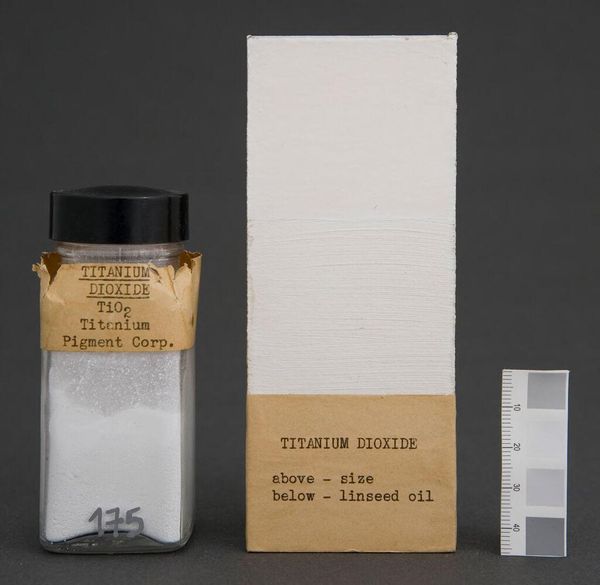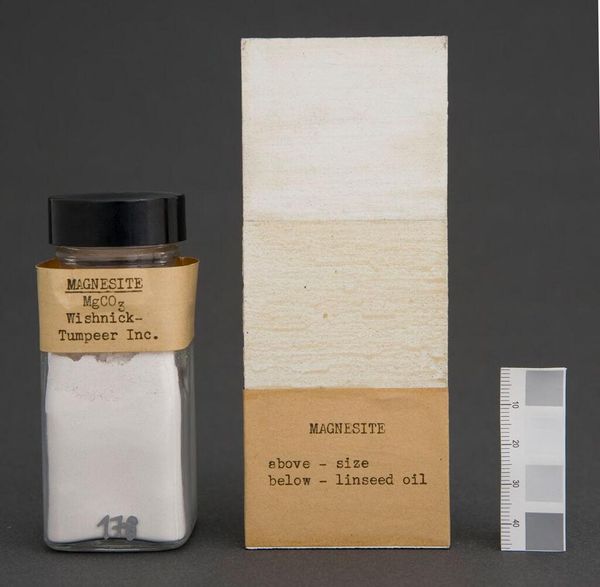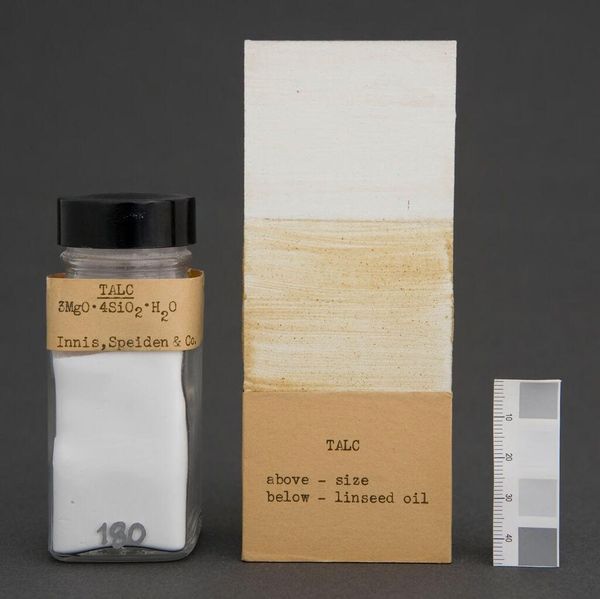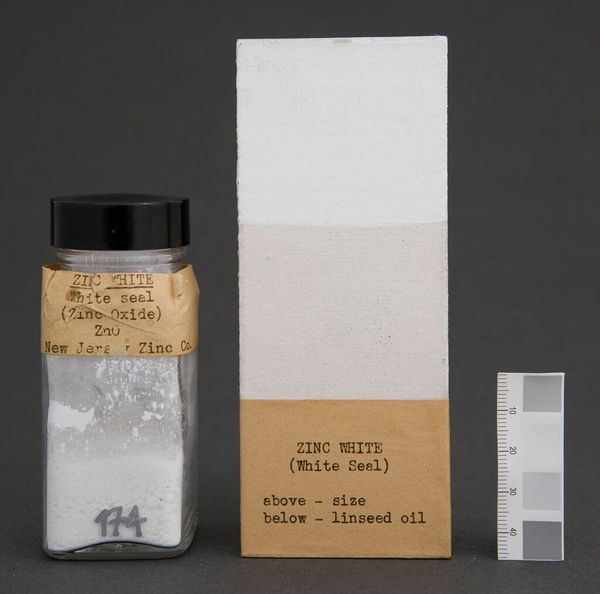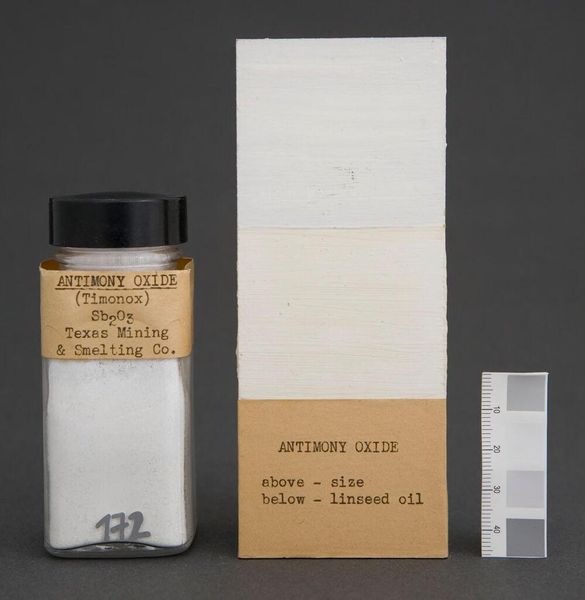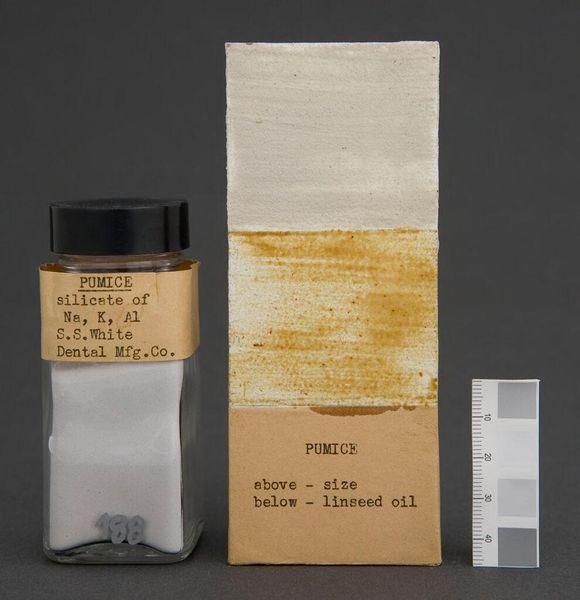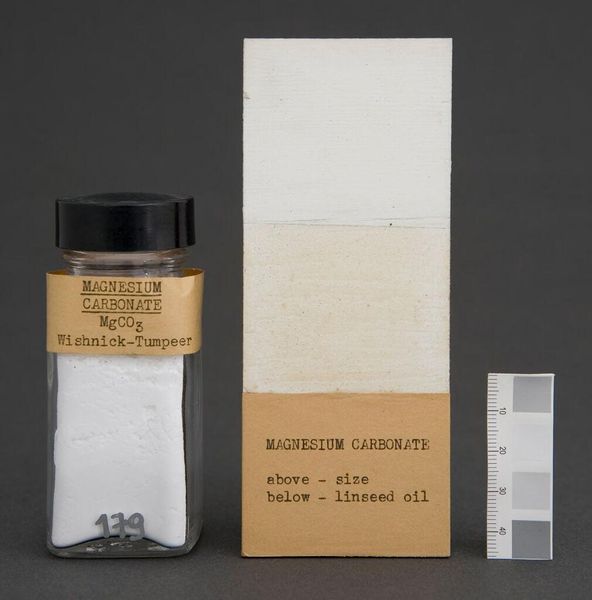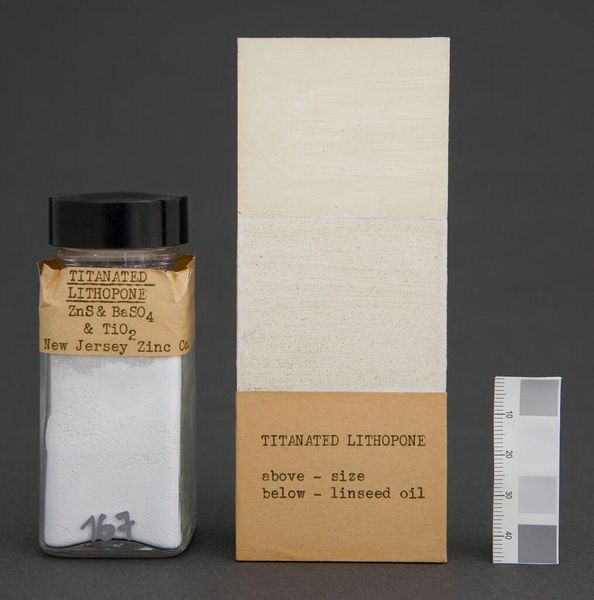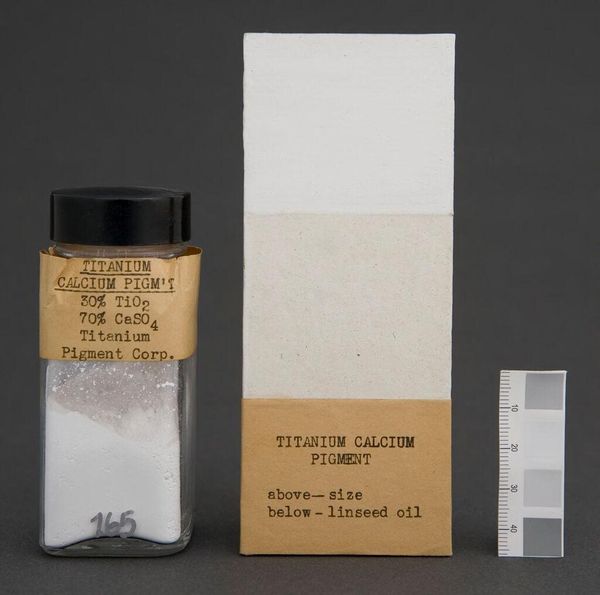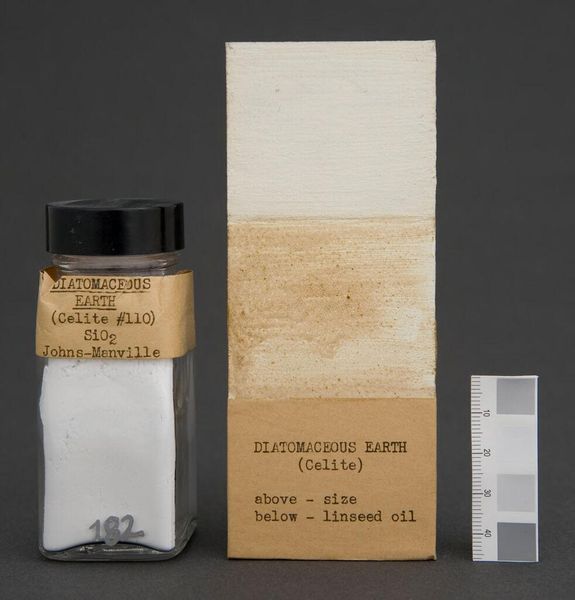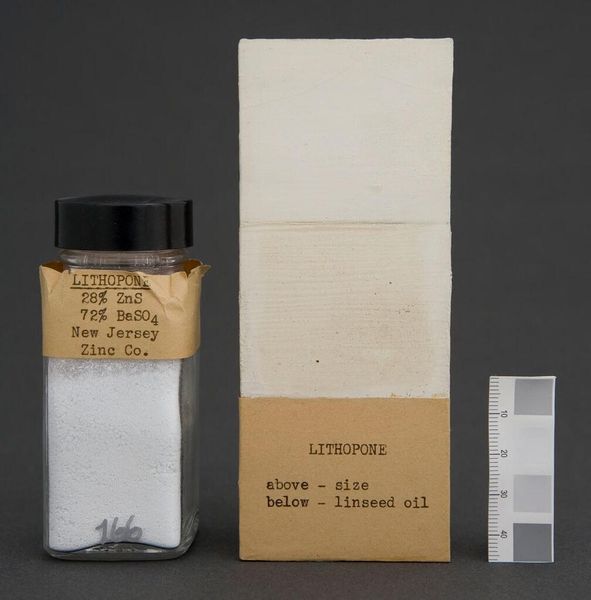
Copyright: CC0 1.0
Curator: Here we have "Aluminum Stearate," created by Hatfield's. It shows the raw material alongside samples mixed with glycerine and linseed oil. Visually, it strikes me as an exercise in materiality, almost clinical in its presentation. Editor: Clinical, yes, but also deeply connected to labor and industry. The choice of materials, the labeling—it all speaks to the historical systems of production. Who was Hatfield's and what was their role in the art world? Curator: Hatfield's was likely a supplier of art materials. This piece offers insight into the support structures that enable art production. Editor: It's interesting to consider who gets to be remembered as the "artist." What does it mean to highlight the material rather than the maker, and how does it challenge notions of authorship and artistic genius? Curator: These are crucial questions. By exhibiting this piece, the museum acknowledges these unseen actors in the art world. Editor: For me, it's a reminder that art doesn't exist in a vacuum, but is part of a larger network of social and economic relationships. Curator: Precisely. And considering these relationships can only enrich our understanding of art history. Editor: Absolutely, broadening the narrative is vital to understanding art's full impact.
Comments
No comments
Be the first to comment and join the conversation on the ultimate creative platform.
